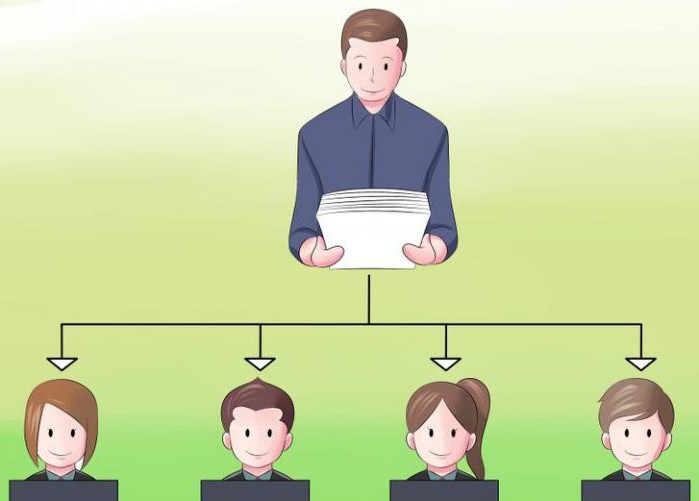Sometimes in the workplace there is a reduction in staff. The event is unpleasant and painful. There are lucky ones who are the last to be affected. Do you know who cannot be cut? Legislation protects certain categories of citizens. It clearly indicates who should not be reduced. The Labor Code of the Russian Federation contains a list of such workers. Let's look at this topic to understand our rights.

What is staff reduction?
First, let's define the concepts. When analyzing who cannot be reduced, one should know what kind of structural change is involved. The fact is that all kinds of perturbations at enterprises are almost constant. This is due to changes in the manufacturing process. Sometimes it is required to attract certain specialists to work, another time the organization needs other employees. The former must either be retrained or dismissed. Then the staff reduction is carried out. This is the procedure for dismissing specialists whom the administration is not able to provide with the volume of work. This should be clearly understood. After all, sometimes they try to use the rule, fixed in the TC, who cannot be reduced, in case of other structural changes. And this paragraph of the law does not apply to them. If an enterprise is liquidated, for example, no one has benefits. All people, regardless of category, must be fired. And if you have to choose among specialists - to leave some, others to reduce - who cannot be reduced - is taken into account in a strict way. The legislation insists on it.

Preferred Employee Categories
Let's look at the list of categories of people who are considered preferential in our case, then we'll talk about each in more detail. Article 261 of the Labor Code provides a list of citizens to whom the reduction is never applied. These include:
- Pregnant
- women raising a child who is less than three years old;
- single mothers (children under 14 years of age or disabled persons under 18).
The legislator also took into account rare situations when the younger generation is half orphaned. If in the situation described above (except for pregnancy) is not a mother, but a different relative, the rule of non-reduction applies to him. That is, there are not many preferential categories. TC primarily protects those with dependent children. This is done in order to take care of the future of the country. After all, mothers raise those who will work after a while, develop society. Nevertheless, sometimes women have to face injustice, as we will discuss below.

How is the reduction carried out?
In a few words we will touch on the procedure itself to find out how to resist arbitrariness. The reduction is organized by order no later than two months before the actual dismissal. The administration is obliged to familiarize employees with this document under their personal signature. Moreover, it takes into account who should not be reduced by law. If you see a violation, you should inform the authorities by written notice. That is, it is necessary to draw up and hand over to the management a memorandum indicating the fact of violation of the law. This is true for women on maternity leave. It is impossible to reduce them. If the personnel officer asks to come to the former place of service in order to get acquainted with the order, it is necessary to take measures to protect their rights. A finer situation in pregnant women. A woman is not obliged to inform her employer about her condition. If she faces dismissal, you need to provide a certificate from the clinic.The same should be done if you learned about pregnancy after reading the order. The employer must change it by excluding the woman from the list. Confirm the fact of pregnancy should be an appropriate document.

Preferential abandonment at work
When they disassemble who cannot be cut back, they also mean other categories of workers. In the TC, in addition to the direct prohibition, there is another wording. These are the benefits of reduction. They resort to it when you have to choose between those employees whom the legislation does not directly protect. For example, you need to fire thirty people out of fifty. Among them there are three women of preferential categories. They are removed from the list immediately. Next step: choose who should be fired. Here the right of preferential leaving at the place of service comes into force. They use it:
- people who have shown the best labor productivity;
- having two or more children;
- the only breadwinners;
- Workers who have received injuries or occupational diseases at the enterprise;
- continuing education professionals.
Please note that the last four paragraphs apply after the first. That is, from the total mass there are those who bring the greatest benefit to the enterprise. They take advantage in the first place. From all the rest, people are selected who fall under the listed categories.
Juvenile reduction
It is no secret that sometimes people have to start their career very early. Legislation protects the rights of minors. In our case, it is necessary to adhere to the provisions of Art. 269 shopping mall. It says that it is impossible to reduce workers who have not reached the age of majority without the consent of the relevant public services. That is, the administration will have to go to the inspection in order to obtain permission to dismiss the young employee. Since the state protects the rights of children, the likelihood of such consent is small. The management of the enterprise, as a rule, is recommended to dismiss someone else. This, as in the case of women in preferential categories, does not apply to cases of liquidation of institutions.

Exceptional Cases
Let's now look at the nuances that arise when a reduction in the staff is carried out. It is impossible to reduce, as already indicated, some categories of women (persons replacing them). However, this sometimes happens. The fact is that Art. 261 contains some reservations. She really forbids the administration-initiated severance of labor relations with pregnant women and mothers. But only when these citizens are law-abiding. If a woman violates labor discipline, unscrupulously using her position, the law does not protect her. Naturally, such facts need confirmation. A woman will be fired if she:
- has a reprimand;
- committed an immoral act;
- presented false documents when applying for a job;
- guilty of a crime;
- violated official duties (in rude form).
Teachers will face punishment if they have been convicted of violent acts against pupils (physical or moral). It is worth noting that in each case, an internal investigation is carried out, documented.

About union leaders
Art. 376 guarantees the leaving at the place of service of people holding senior positions in public organizations. More specifically, it protects union leaders. They cannot be simply reduced for two years after they left their post. For dismissal under this article, the consent of a higher level trade union body is required. In practice, you should get a document from the district organization that they do not object to the reduction of a specific figure, albeit a former.
Other nuances
The law guarantees the preservation of duty stations in some cases. So, the contract cannot be terminated when the employee is sick or is on vacation. This also applies to cases of reduction.That is, when a person is on sick leave, he can not be included in the order warning about the imminent dismissal. Sometimes disability lasts quite a while. Legislation allows you to break the contract only after four months of continuous sick leave. In other cases, the worker retains the workplace. As for vacation, the reduction order is presented to the specialist upon its completion. During the period of rest, questions about the future fate of a person are prohibited. This is indicated by art. 81.

Conclusion
We have considered who cannot be reduced. The Labor Code addresses this issue in several articles, focusing on the condition and benefits of the worker. That is why it is recommended to study this document carefully. You should know your rights so as not to suffer from arbitrariness unscrupulous employer. Reduction is an unpleasant, but sometimes necessary measure. Unfortunately, sometimes it is carried out in order to get rid of an uncomfortable employee. If you find violations in the procedure, seek protection of your rights. There is a labor inspectorate and a court for this. These organs, as a rule, act on the side of the worker. Therefore, feel free to seek advice and help. Good luck!








